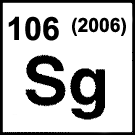Oct 14
20070
Anatomy & Physiology, Art, Biology, Chemistry, History, Physics, Science
Aeneid Alfred Nobel chemistry Erik Lindberg Latin medicine physics physiology prize Sweden Vergil
Nobel Prize 2007

“Prizes to those who, during the preceding year, shall have conferred the greatest benefit to mankind.”
The 2007 Nobel Prize awards for chemistry, physiology or medicine, and physics were recently announced as they are every year at around this time.
As I mentioned in last year’s post, the Nobel Prize awards were established in 1895 according to the will of Swedish chemist, engineer, and inventor Alfred Nobel and endowed by his estate. Other than the three natural science awards, Alfred also wanted awards for literature and peace. All five Nobel Prizes were first awarded in 1901. In 1968, Sweden’s central bank established and endowed the Nobel Memorial Prize in Economic Sciences for their 300th anniversary. This prize for economics in honor of Alfred Nobel was first awarded the following year.
The Royal Swedish Academy of Sciences grants the prizes for chemistry and physics (and economics), while the Karolinska Institute grants the prize for physiology or medicine.
The Nobel Prize awards are presented in Stockholm, Sweden (except for the Nobel Peace Prize, which is presented in Oslo, Norway) every year on December 10, which is the anniversary of Alfred Nobel’s death.
The Nobel Prize science medals were designed by Swedish engraver Erik Lindberg in 1902. The Latin inscription on the medals is
Inventas vitam juvat excoluisse per artes
and can be translated as And all who found new arts, to make man’s life more blest or fair. The inscription is from Book 6, line 663 of Vergil’s Aeneid:
And poets, of whom the true-inspired song deserved Apollo’s name;
and all who found new arts, to make man’s life more blest or fair;
(translation by Theodore C. Williams)
For the chemistry and physics medals, Erik Lindberg chose to show Nature being unveiled by the Genius of Science. For the medal for physiology or medicine, Erik chose to show the Genius of Medicine gathering water to quench the thirst of a sick child.
The 2007 Nobel Prize for Chemistry is awarded to Fritz Haber Institute of the Max Planck Society scientist Gerhard Ertl for his studies of chemical processes on solid surfaces.
The 2007 Nobel Prize for Physiology or Medicine is awarded to Howard Hughes Medical Institute scientist Mario Capecchi, Cardiff University scientist Sir Martin Evans, and University of North Carolina at Chapel Hill scientist Oliver Smithies for their discoveries of the principles for introducing specific gene modifications in mice by the use of embryonic stem cells.
The 2007 Nobel Prize for Physics is awarded to both Université Paris-Sud in Orsay professor Albert Fert and Jülich Research Center scientist Peter Grünberg for their discovery of giant magnetoresistance.




